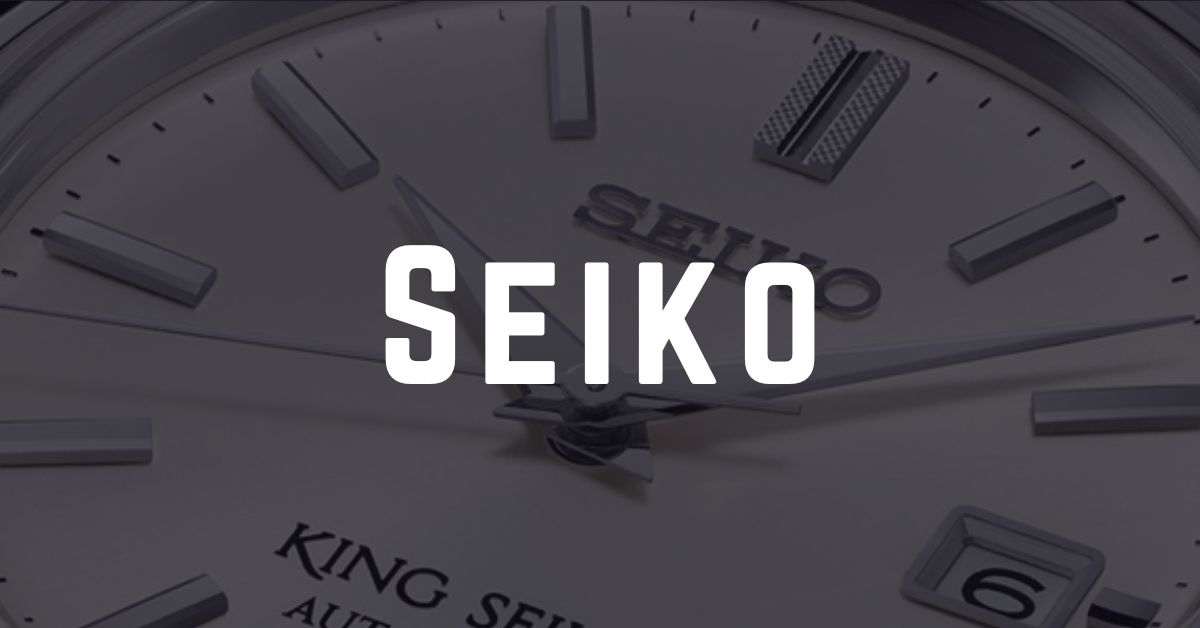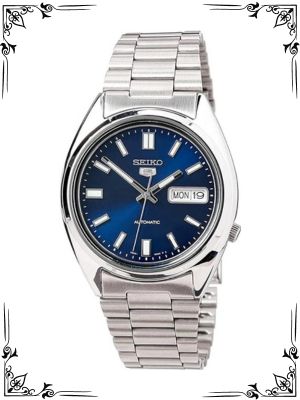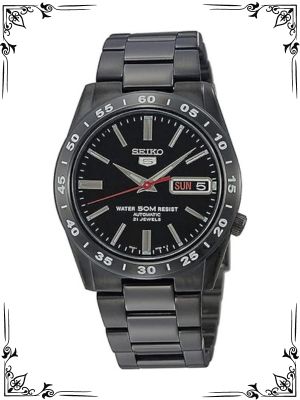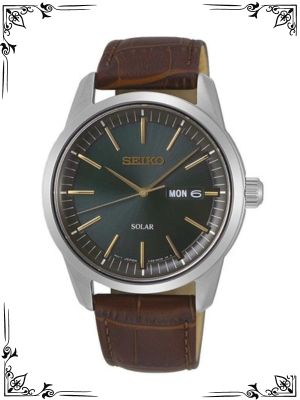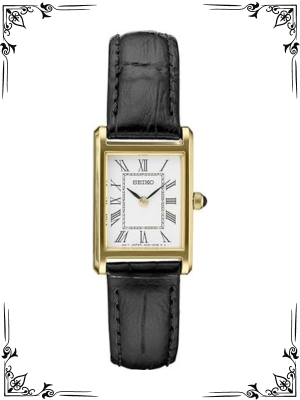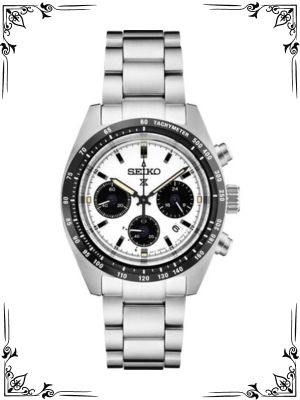Seiko, a brand synonymous with precision, innovation, and affordability, has carved out a significant niche in the world of horology. From its humble beginnings in Japan to its current status as a global watchmaking powerhouse, Seiko’s journey is a testament to its dedication to craftsmanship and technological advancement.
This comprehensive guide delves into Seiko’s illustrious history, significant collections, technological innovations, and cultural impact, exploring why it remains a revered name in the watch industry.
The Origins and History of Seiko
Seiko’s story began in 1881 when Kintaro Hattori opened a shop selling and repairing watches and clocks in Tokyo. Twelve years later, in 1892, he founded the Seikosha factory, where he produced wall clocks. The name “Seikosha” translates to “House of Exquisite Workmanship,” foreshadowing the brand’s commitment to quality and innovation.
In 1924, the first watches bearing the Seiko name were produced. This marked the beginning of Seiko’s transformation into a leading watchmaker.
Over the decades, Seiko continued to innovate, introducing Japan’s first wristwatch, the Laurel, in 1913, and the world’s first quartz watch, the Seiko Quartz Astron, in 1969. These milestones established Seiko as a pioneer in both mechanical and electronic watchmaking.
Table: Milestones in Seiko’s History
| Year | Milestone |
|---|---|
| 1881 | Kintaro Hattori opens his shop in Tokyo |
| 1892 | Seikosha factory is established |
| 1913 | Introduction of the Laurel, Japan’s first wristwatch |
| 1924 | First watches bearing the Seiko name produced |
| 1960 | Introduction of the Grand Seiko line |
| 1969 | Launch of the Seiko Quartz Astron, the world’s first quartz watch |
| 1982 | Introduction of the Seiko TV Watch |
| 2012 | Launch of the Seiko Astron GPS Solar watch |
Seiko’s Commitment to Innovation
Seiko has always been at the forefront of watchmaking innovation, introducing numerous world-firsts and industry advancements.
One of the brand’s most significant breakthroughs was the development of the quartz movement. The Seiko Quartz Astron, introduced in 1969, revolutionized the watch industry with its unparalleled accuracy and reliability, setting the standard for modern timekeeping.
Another notable innovation was the creation of the Kinetic movement in 1986. The Seiko Kinetic watch combined the accuracy of quartz with the convenience of automatic winding, harnessing the wearer’s kinetic energy to power the watch. This innovation was a significant step towards sustainable watchmaking, reducing the need for battery replacements.
Seiko’s dedication to innovation extends beyond movements. The brand has also pioneered advancements in materials and design. For instance, Seiko was one of the first watchmakers to use Hardlex crystal, a durable and scratch-resistant glass, in its watches.
The brand’s Spring Drive technology, introduced in 1999, combines the best of mechanical and quartz watchmaking, offering unmatched precision and a smooth, gliding second hand.
Table: Notable Seiko Innovations
| Innovation | Description |
|---|---|
| Quartz Movement | Seiko Quartz Astron, the world’s first quartz watch (1969) |
| Kinetic Movement | Combines quartz accuracy with automatic winding (1986) |
| Spring Drive | Hybrid technology combining mechanical and quartz (1999) |
| Hardlex Crystal | Durable, scratch-resistant glass used in Seiko watches |
| GPS Solar | Solar-powered watch with GPS timekeeping (2012) |
Iconic Seiko Collections
Seiko’s collections encompass a wide range of styles and functionalities, catering to diverse tastes and needs. Each collection embodies Seiko’s commitment to quality, innovation, and craftsmanship.
Grand Seiko
The Grand Seiko collection, introduced in 1960, represents the pinnacle of Seiko’s watchmaking expertise. These watches are known for their exceptional precision, durability, and timeless elegance.
Grand Seiko watches feature high-quality movements, including the Spring Drive and Hi-Beat calibers, and are meticulously crafted to meet the highest standards of Japanese watchmaking.
Seiko Prospex
The Seiko Prospex collection is designed for professionals and adventurers who require reliable and durable timepieces. The collection includes diving, aviation, and land exploration watches, all built to withstand extreme conditions.
Seiko Prospex watches are known for their robust construction, water resistance, and innovative features, such as solar charging and GPS functionality.
Seiko Presage
The Seiko Presage collection blends traditional Japanese craftsmanship with modern watchmaking technology. These watches feature elegant designs, inspired by Japanese aesthetics, and are powered by high-quality mechanical movements. The Presage collection includes both dress and casual watches, offering something for every occasion.
Seiko 5
The Seiko 5 collection, introduced in the 1960s, is known for its reliability, affordability, and versatility. The “5” stands for five key attributes: automatic movement, day-date display, water resistance, recessed crown, and durable case and bracelet.
Seiko 5 watches are popular among watch enthusiasts and collectors for their robust performance and accessible price points.
Astron
The Seiko Astron collection represents the brand’s commitment to cutting-edge technology. The Astron GPS Solar watches use solar power and GPS signals to adjust to the exact time, anywhere in the world. This collection combines advanced functionality with elegant design, making it ideal for frequent travelers and tech enthusiasts.
Table: Notable Seiko Watch Collections
| Collection | Key Features |
|---|---|
| Grand Seiko | Exceptional precision, Spring Drive, Hi-Beat movements |
| Prospex | Durable, professional-grade, diving and exploration watches |
| Presage | Traditional craftsmanship, elegant designs, mechanical movements |
| Seiko 5 | Reliable, affordable, versatile, automatic movement |
| Astron | GPS Solar technology, global timekeeping, advanced functionality |
The Art of Japanese Craftsmanship
Seiko’s commitment to craftsmanship is deeply rooted in Japanese culture, which values precision, attention to detail, and dedication to excellence. The brand’s watches are meticulously crafted by skilled artisans who uphold these principles, ensuring each timepiece meets the highest standards of quality.
Seiko’s mechanical movements are a testament to this craftsmanship. The brand produces its movements in-house, allowing for complete control over the production process. This ensures that every component, from the tiniest gear to the most intricate complication, is crafted with precision and care.
The finishing of Seiko’s watches is equally impressive. Grand Seiko, in particular, is renowned for its “Zaratsu” polishing technique, which creates a mirror-like finish on the case and bracelet. This technique requires exceptional skill and patience, resulting in a flawless, reflective surface that enhances the watch’s aesthetic appeal.
Seiko also incorporates traditional Japanese artistry into its designs. The Presage collection, for example, features dials crafted using traditional techniques such as enamel, Urushi lacquer, and Arita porcelain. These techniques add depth and texture to the dials, creating unique and captivating timepieces.
Seiko in Popular Culture
Seiko’s influence extends beyond the world of horology into popular culture. The brand’s watches have appeared in numerous films, television shows, and sports events, enhancing their status as iconic timepieces.
One of the most famous appearances of a Seiko watch was in the 1983 James Bond film “Octopussy.” Roger Moore, as James Bond, wore a Seiko G757 Sports 100, featuring a digital display and advanced functionality for the time. This association with the suave secret agent cemented Seiko’s reputation for innovation and style.
Seiko watches have also been worn by various athletes and adventurers. The brand’s Prospex collection, designed for professional use, has been the choice of divers, climbers, and pilots worldwide. This association with extreme sports and exploration highlights Seiko’s commitment to durability and reliability.
In addition to its appearances in media and sports, Seiko has collaborated with various artists and designers, creating limited-edition watches that blend horology with contemporary art. These collaborations showcase Seiko’s versatility and appeal to a broad range of tastes and interests.
Collecting Seiko Watches
Collecting Seiko watches has become increasingly popular among watch enthusiasts. The brand’s rich history, diverse collections, and reputation for quality make its timepieces highly desirable.
Vintage Seiko watches, particularly those from the 1960s and 1970s, are especially prized. Models such as the Seiko 6105 diver’s watch, the Seiko 6139 chronograph (one of the world’s first automatic chronographs), and the Seiko “Pogue” (worn by astronaut William Pogue during the Skylab 4 mission) are sought after for their historical significance and unique designs.
Limited editions and special collaborations also attract significant attention from collectors. Seiko frequently releases limited-edition models that celebrate milestones, commemorate events, or feature unique designs. These watches often appreciate in value over time, making them attractive investments.
When collecting Seiko watches, it is essential to consider factors such as rarity, condition, and provenance. Purchasing from reputable dealers and ensuring the authenticity of the watch are crucial steps in building a valuable collection.
Table: Notable Seiko Watches for Collectors
| Model | Description |
|---|---|
| Seiko 62MAS | Seiko’s first diver’s watch, introduced in 1965 |
| Seiko SKX007 | Iconic, affordable diver’s watch, robust design |
| Seiko 6105 “Captain Willard” | Famous for its appearance in the movie “Apocalypse Now” |
| Seiko 6139 “Pogue” | One of the first automatic chronographs, worn in space |
| Seiko Turtle | Popular diver’s watch with a distinctive cushion case |
| Grand Seiko Hi-Beat | High-frequency movement, exceptional precision |
| Seiko Alpinist | Versatile, adventure-ready watch with an iconic green dial |
| Seiko SARB033 | Classic dress watch, known for its elegance and simplicity |
| Seiko Marinemaster 300 | Professional-grade diver’s watch, highly durable |
| Seiko Astron | World’s first GPS solar watch, introduced in 2012 |
Buying and Maintaining Seiko Watches
When buying a Seiko watch, it is essential to purchase from an authorized dealer or a reputable source to ensure authenticity and quality. Seiko’s extensive range of models caters to various tastes and budgets, from affordable entry-level watches to high-end luxury timepieces.
Seiko watches are known for their durability and reliability, but regular maintenance is essential to keep them in optimal condition. Mechanical watches, in particular, require periodic servicing to ensure accuracy and longevity. Seiko recommends servicing mechanical watches every three to five years, depending on usage and environmental conditions.
Quartz watches also benefit from regular maintenance, including battery replacements and water resistance checks. Seiko’s Kinetic and Solar watches require less frequent maintenance, as they harness energy from the wearer’s movement or sunlight, respectively.
Seiko has a global network of service centers staffed by trained technicians who can provide expert care for your watch. Regular servicing and proper care will ensure that your Seiko watch continues to perform accurately and remains a cherished timepiece for years to come.
Seiko’s Environmental and Social Responsibility
Seiko is committed to environmental sustainability and social responsibility. The brand has implemented various initiatives to reduce its environmental impact and promote ethical practices.
One of Seiko’s significant contributions to sustainability is its development of eco-friendly watch technologies. Seiko’s Solar and Kinetic watches harness renewable energy sources, reducing the need for disposable batteries and minimizing environmental waste.
The brand’s commitment to these technologies demonstrates its dedication to sustainable watchmaking.
Seiko also adheres to ethical sourcing practices, ensuring that materials used in its watches are responsibly obtained. The brand is a member of the Responsible Jewellery Council (RJC), which promotes ethical, social, and environmental practices in the jewelry supply chain.
In addition to its environmental efforts, Seiko supports various social initiatives. The brand sponsors sports events and cultural activities, contributing to the promotion of healthy lifestyles and the preservation of cultural heritage. Seiko’s dedication to corporate social responsibility reflects its commitment to making a positive impact on society.
The Future of Seiko
As Seiko continues to innovate while honoring its rich heritage, the future looks promising for this iconic brand. The company’s commitment to precision, craftsmanship, and sustainability ensures that it will remain a leader in the watch industry.
Upcoming advancements in materials, movements, and technology promise to enhance Seiko’s already impressive lineup. The brand’s dedication to sustainability and ethical practices will continue to resonate with a new generation of consumers who value responsible luxury.
Seiko’s timeless designs and enduring appeal guarantee that it will continue to create exceptional timepieces that captivate and inspire watch enthusiasts around the world. As Seiko embraces the future, it remains steadfast in its mission to provide high-quality, innovative watches that reflect the brand’s enduring spirit of excellence.
FAQs
What makes Seiko watches unique?
Seiko watches are unique due to their combination of precision, innovation, and affordability. The brand is known for pioneering technologies such as the quartz movement, Kinetic movement, and Spring Drive. Seiko’s commitment to quality craftsmanship and its diverse range of collections cater to various tastes and budgets, making it a popular choice among watch enthusiasts.
How often should a Seiko mechanical watch be serviced?
Seiko recommends servicing mechanical watches every three to five years, depending on usage and environmental conditions. Regular maintenance ensures the watch’s accuracy and longevity. It includes cleaning, lubrication, and the replacement of worn parts.
Are Seiko watches a good investment?
A3: Seiko watches can be a good investment, particularly vintage models, limited editions, and special collaborations. Watches with historical significance, unique designs, and high-quality craftsmanship are often appreciated over time. As with any investment, it’s essential to research and purchase from reputable sources.
What is the difference between Seiko and Grand Seiko?
Seiko and Grand Seiko are both part of the Seiko family but cater to different market segments. Grand Seiko represents the pinnacle of Seiko’s watchmaking expertise, offering high-end luxury watches with exceptional precision, craftsmanship, and materials.
Seiko, on the other hand, offers a wide range of watches, from affordable entry-level models to mid-range timepieces, known for their reliability and innovation.
How do Seiko Solar watches work?
Seiko Solar watches are powered by light, converting sunlight and artificial light into energy to power the watch. The solar cells are located beneath the dial, and excess energy is stored in a rechargeable battery. This technology eliminates the need for regular battery replacements, making it an eco-friendly and convenient option.
Conclusion
Seiko stands as a symbol of precision, innovation, and affordability in the watch industry. From its founding in 1881 to its current status as a global watchmaking powerhouse, Seiko has consistently produced timepieces that are celebrated for their exceptional craftsmanship, technological advancements, and timeless designs.
The brand’s commitment to innovation, as evidenced by groundbreaking technologies such as the quartz movement, Kinetic movement, and Spring Drive, ensures that Seiko remains at the forefront of horology. Its diverse collections, including Grand Seiko, Prospex, Presage, Seiko 5, and Astron, offer something for every watch enthusiast, from luxury to sports and everything in between.
Seiko’s influence extends beyond the world of horology into popular culture, with its watches appearing in films, sports events, and collaborations with artists and designers. The brand’s dedication to environmental sustainability and social responsibility further enhances its reputation as a responsible and forward-thinking company.
As Seiko continues to innovate while honoring its rich heritage, the future looks bright for this iconic brand. With a steadfast dedication to excellence and a vision for the future, Seiko will undoubtedly continue to create exceptional timepieces that captivate and inspire for generations to come.

